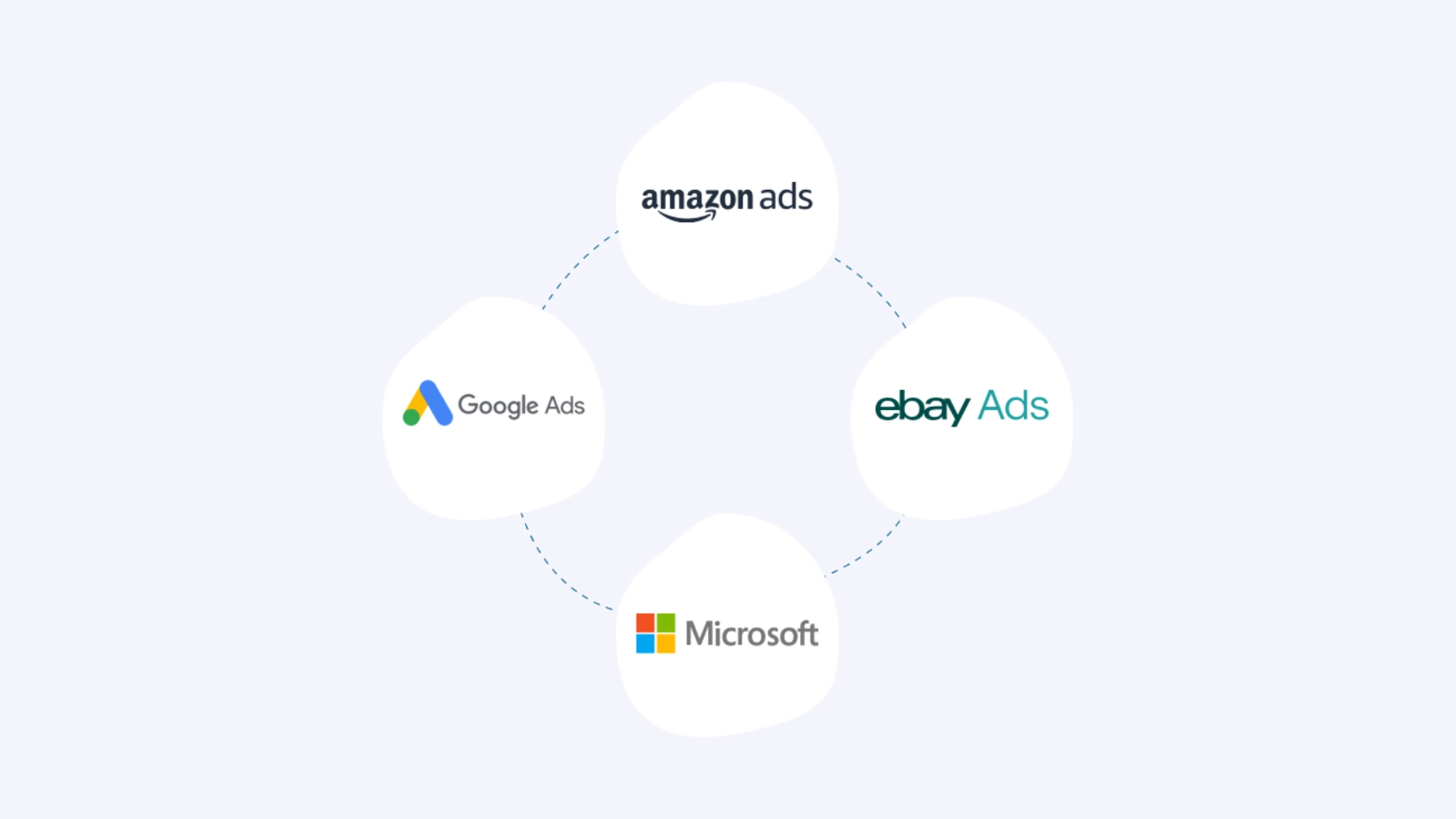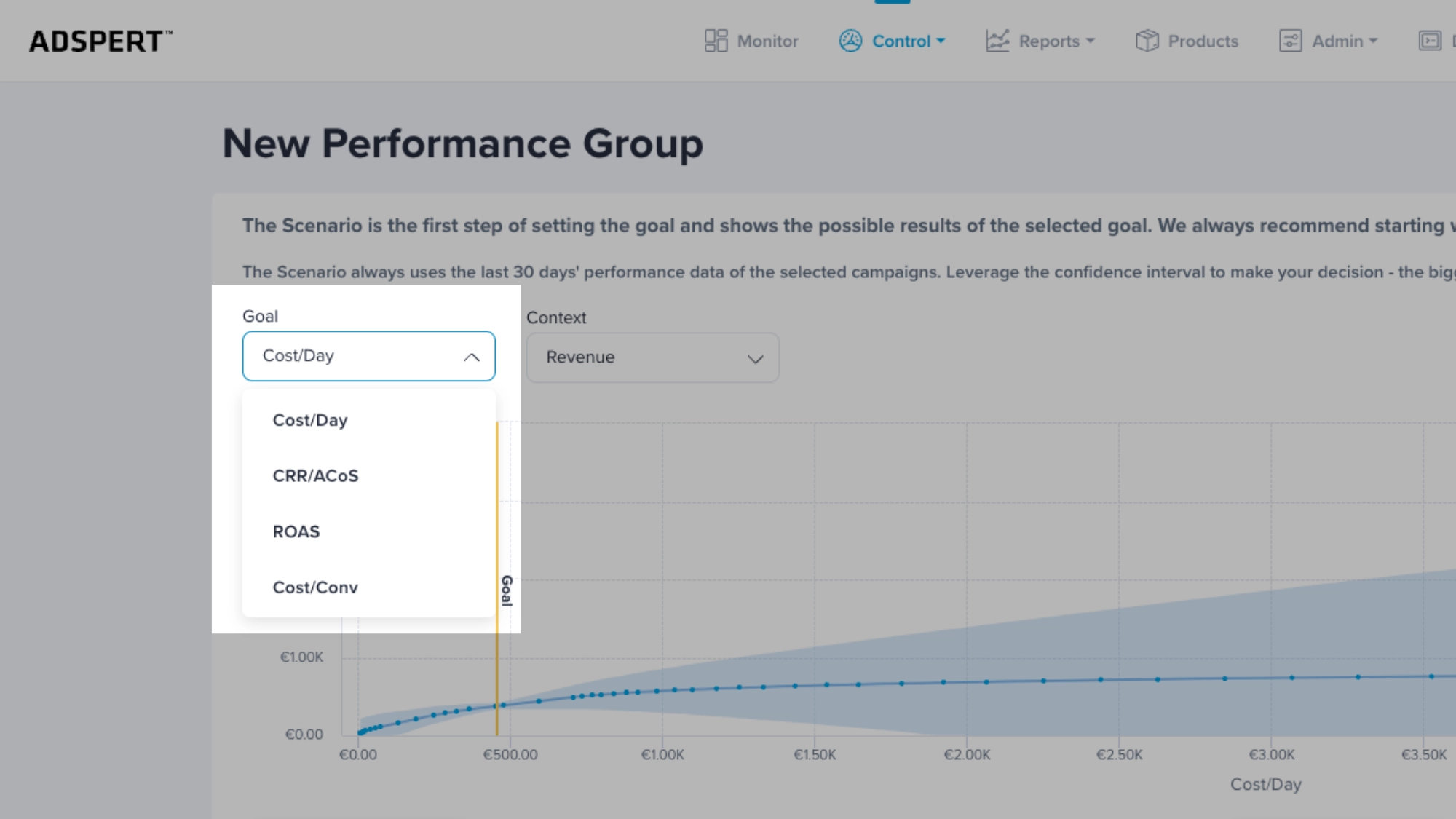Before I continue I would like to remind you what is “criteria”. Criteria is an umbrella term for everything that can be bid on: keywords, ASINs, products, categories, and so on. So from this point on, I will use ‘criteria’ instead of ‘keywords and ASINs’.
Important note
Do not confuse ‘Criteria’ with ‘Search Term’. A criterion is something you can bid on. A search term is what the users type in the search field that eventually leads them to click on your product ad.
Step 1 – Search Query Report
What is a Search Query Report?
Amazon Ads, like any other advertising platform, provides Search Query Reports to its users.
The Search Query Report contains a report of all the search terms shoppers used that led them to click on your products’ ads. It also includes their performance data and the target that triggered the ad to show.
If you’re ever curious you can actually download the report from your Amazon Ads platform.
How Adspert uses Search Query Report?
Adspert, of course, takes the programmatic approach. Instead of downloading the Search Query Report, Adspert automatically syncs it via the official Amazon Ads API endpoints.
Search Query Report is synced and stored for every campaign type that has it available. It is Adspert’s base to find criteria to add to your ad groups.
Step 2 – Analyze and qualify search terms to be added as criteria
2.1 Search Term Analysis
- Analyzing search term performance data: Once the data is sync and stored, Adspert analyzes the performance data for each individual search term over the past 30 days.
- Comparing search term performance data with ad group averages: Each search term’s stats are then compared to different ad group averages. Adspert always dissects the performance data from different angles, resulting in different ad group averages.
- Identifying outliers: This is where the key decision takes place. By comparing the search terms to the different ad group averages, Adspert identifies different outliers.
What is an ‘outlier’?
Outlier is any search term that significantly differs from the relevant ad group average, either positively or negatively. For example, an outlier can be a high-converting search term and also a low-converting search term.
2.2 Search Term Qualification
Adspert then compares the outliers to the Adspert-defined thresholds established to qualify a search term as a candidate to be added to your ad groups.
So, after qualifying search terms, Adspert has a list of criteria candidates – not yet criteria!
That happens in the next step. Keep reading to see how.
Step 3 – Prepare search terms for addition: Harvesting vs Refinement
Once Adspert has a list of the criteria candidates, the last step of the process kicks in – preparing the search terms as criteria (biddable objects).
Here is where we need to talk about Harvesting and Refinement. Harvesting and Refinement are two different ways of adding the new criteria based on where the search terms were initially found. Both are equally important and valuable!
Why does Adspert use two methods instead of one?
Because these two terms refer to how exactly the criteria is suggested to be added and have to do with the different campaign types available on Amazon Ads:
- Harvesting: Sponsored Products Auto
- Refinement: Sponsored Products Manual and Sponsored Brands
Again, both methods are equally important and valuable! Let’s have a closer look at each method.
Harvesting
Harvesting refers to the process of adding criteria that are found in the Sponsored Products Auto campaigns’ Search Query Report.
- We essentially harvest (hence the name) the criteria from the Auto campaigns.
- Then we add them to the corresponding Manual campaigns and ad groups.
- At the same time we set them as ‘Negative’ in the Auto campaign.
Why? To ensure that the focus is on the criteria in the Manual campaign. And the Auto campaign can continue exploring and keep finding other criteria to bid on.
In other words, by adding it as negative to the Auto ad group, we free up the budget for the Amazon Ads algorithm to try and find other search terms for your ad groups.
In this case, a keyword, for example, would be suggested to be added as Exact and Phrase to the Manual ad group, and added as Negative Exact and Negative Phrase to the Auto ad group where it was initially found as a search term.
Practical Example of Criteria Harvesting
Let’s assume that you are advertising a yellow hat. And the search term qualifying in the previous step is ‘yellow fluffy hat’.
Adspert suggests adding it as:
- Exact and phrase keyword in the corresponding Sponsored Products Manual campaign & ad group,
- Negative exact and negative phrase keyword in the source Sponsored Products Auto campaign & ad group where Adspert initially found the search term.
This way, as mentioned, the Auto campaign’s budget is freed up from whatever was spent for this search term to continue the exploration of other potential search terms that work for your campaign.

Refinement
Refinement, on the other hand, is behavior that applies to the search terms qualified from Sponsored Products Manual and Sponsored Brands Search Query Reports.
In this case, the search term is refined from a pre-existing criterion that was bid on.
Practical Example of Refinement
For example, you might be using the phrase keyword ‘yellow hat’.
- This triggers the search term ‘yellow hat for adults’ to be qualified for addition by Adspert
- Adspert prepares it to be added as an Exact Keyword to the same ad group where the search term was initially located.
Please note: the examples above assume that no edits were made to Criterion Hub Rules or Suggestion Destinations. You can decide how you would like Adspert to add criteria to your accounts – or not.
But that’s not all! Remember how I explained how Adspert identifies outliers in Step 2? And how outliers can be high- and also low-converting keywords?
This may sound crazy, but our advanced automation also qualifies search terms from the lower end. Keep reading to find out why.
Why Is It Important to Include Low-Converting Keywords
You might be surprised: Adspert does not only qualify search terms that are expected to deliver good performance. Quite the opposite!
Search terms that might not perform well are just as important as those expected to do well.
Here’s why: even if it is less likely, they still might bring in sales.
You might be wondering: But wouldn’t that increase my PPC advertising costs?
No, Adspert has you covered. Simply put, the existing criteria in the ad group that triggered the ad showing for specific search term might be causing your budgets to be spent on searches that bring very poor results.
This indicates to the Adspert bidding AI algorithm that that specific search term should receive a reduced bid. The latter minimizes the negative impact on the overall budget and results. But it leaves room for sales that might still happen.
Let me explain with a practical example.
Practical Example: Why Adding Low-Performing Search Terms Matters
Imagine the product you’re advertising is an elegant yellow hat for adults in a Sponsored Products Auto campaign.

- The ad is served for the search term ‘mickey mouse yellow hat for kids’, which doesn’t really work for your product, causing you to spend money and get nothing out of it.
- The search term ‘mickey mouse yellow hat for kids’ therefore deviates negatively from the ad group average,
- This which indicates to Adspert that ‘mickey mouse yellow hat for kids’ should be added as an exact keyword in the Manual campaign, so that the bidding algorithm can reduce the bid for that exact keyword and therefore control your budget better
- At the same time you do , but not completely close the door, because there might be users that search for a mickey mouse yellow hat and are happy to buy yours nonetheless (perhaps to match with their kids?).

Conclusion
Ultimately, it should always be the AI bidding algorithm that should call the shots, and the addition automation is in place to set the groundwork for it. So if you see what you would consider irrelevant keywords and ASINs to be harvested from your Auto campaigns, don’t panic – it’s proof that all is working as intended!
Would you like to find out more about how our AI works? Read this post about PPC AI and how our algorithm nails bid optimization for you.




